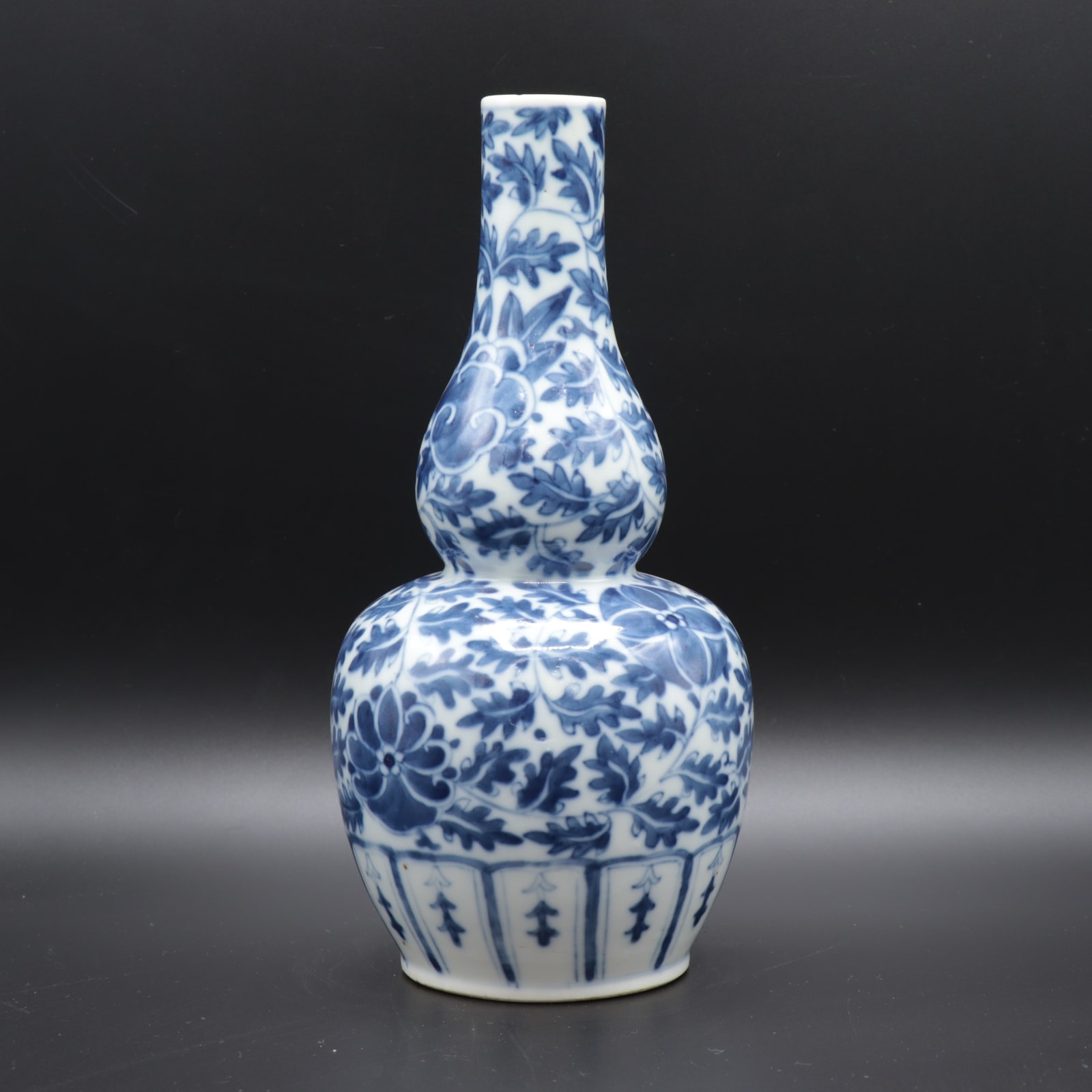Blue and White porcelain gourd-shape vase, 1700 CE - 1900 CE
Porcelain
height 25 cm
height 9 7/8 in
height 9 7/8 in
CB.2752
Further images
'Blue and white pottery' covers a wide range of white pottery and porcelain decorated under the glaze with a blue pigment, generally cobalt oxide. The decoration is commonly applied by...
"Blue and white pottery" covers a wide range of white pottery and porcelain decorated under the glaze with a blue pigment, generally cobalt oxide. The decoration is commonly applied by hand thgough brush painting but also by stencilling or by transfer-printing.
Stencilling is a technique which produces a pattern by applying pigment to a surface over an intermediate object with designed gaps in it which permit to the pattern to be created by allowing the pigment to reach only some parts of the surface. Blue and white decoration first became widely used in Chinese porcelain in the 14th century, after the cobalt pigment for the blue began to be imported from Persia. However, the origin of this decorative style is thought to have initially started in Iraq, when craftsmen in Basra sought to imitate imported white Chinese stoneware with their own tin-glazed, white pottery and added decorative motifs in blue glazes. Such Abbasid-period "blue and white" pieces of ceramics date to the 9th century A.D., decades after the opening of a direct sea route from Iraq to China.
Later a style of decoration based on sinuous vegetal and floral forms spreading across the object was perfected and became extremely popular. Examples of such decorated porcelain were widely exported, and inspired imitative wares in Islamic ceramics and later European tin-glazed earthenware such as Delftware and after the techniques were discovered in the 18th century, European porcelain.
The true development of blue and white ware in China started with the first half of the 14th century, when it progressively replaced the century-long tradition of bluish-white ware, or Qingbai. The main production center was in Jingdezhen, Jiangxi Province.
15th century[edit]
With the advent of the Ming dynasty in 1368, blue and white ware was shunned for a time by the Court, as being too foreign in inspiration. Blue and white porcelain however came back to prominence with the Xuande Emperor, and again developed from that time on.
During the 16th century a number of blue and white wares were characterized by Islamic influences, which sometimes bore Persian and Arabic script, due to the influence of Muslim eunuchs serving at his court.
Stencilling is a technique which produces a pattern by applying pigment to a surface over an intermediate object with designed gaps in it which permit to the pattern to be created by allowing the pigment to reach only some parts of the surface. Blue and white decoration first became widely used in Chinese porcelain in the 14th century, after the cobalt pigment for the blue began to be imported from Persia. However, the origin of this decorative style is thought to have initially started in Iraq, when craftsmen in Basra sought to imitate imported white Chinese stoneware with their own tin-glazed, white pottery and added decorative motifs in blue glazes. Such Abbasid-period "blue and white" pieces of ceramics date to the 9th century A.D., decades after the opening of a direct sea route from Iraq to China.
Later a style of decoration based on sinuous vegetal and floral forms spreading across the object was perfected and became extremely popular. Examples of such decorated porcelain were widely exported, and inspired imitative wares in Islamic ceramics and later European tin-glazed earthenware such as Delftware and after the techniques were discovered in the 18th century, European porcelain.
The true development of blue and white ware in China started with the first half of the 14th century, when it progressively replaced the century-long tradition of bluish-white ware, or Qingbai. The main production center was in Jingdezhen, Jiangxi Province.
15th century[edit]
With the advent of the Ming dynasty in 1368, blue and white ware was shunned for a time by the Court, as being too foreign in inspiration. Blue and white porcelain however came back to prominence with the Xuande Emperor, and again developed from that time on.
During the 16th century a number of blue and white wares were characterized by Islamic influences, which sometimes bore Persian and Arabic script, due to the influence of Muslim eunuchs serving at his court.











